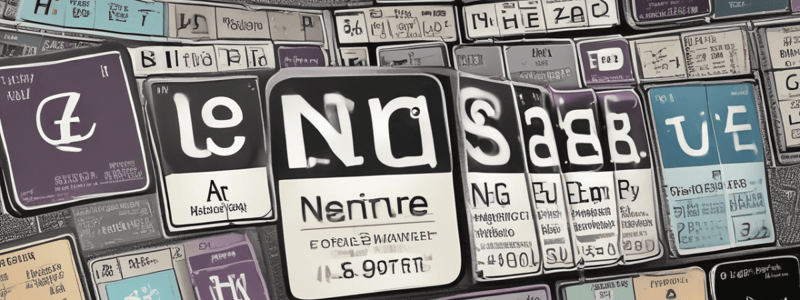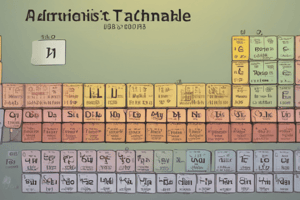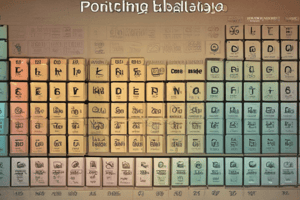Podcast
Questions and Answers
Match each transition metal with its common use:
Match each transition metal with its common use:
Copper = Electrical wiring Iron = Construction materials Gold = Jewelry Nickel = Alloys
Match each metalloid with its property:
Match each metalloid with its property:
Silicon = Semiconductor of electricity Boron = Shares properties with metals and nonmetals Arsenic = Semiconductor of electricity Antimony = Metallic appearance
Match each nonmetal with its characteristic:
Match each nonmetal with its characteristic:
Oxygen = Gaseous at room temperature Carbon = Forms brittle solids Nitrogen = Does not conduct electricity Sulfur = Conducts heat well
Match each noble gas with its common use:
Match each noble gas with its common use:
Match each halogen with its property:
Match each halogen with its property:
Match each element with its location on the periodic table:
Match each element with its location on the periodic table:
Match the element category with its description:
Match the element category with its description:
Match the element property with its description:
Match the element property with its description:
Match the term with its definition:
Match the term with its definition:
Match the alkaline earth metals with their examples:
Match the alkaline earth metals with their examples:
Match the classification with its category:
Match the classification with its category:
Match the element property with its significance:
Match the element property with its significance:
Flashcards are hidden until you start studying




